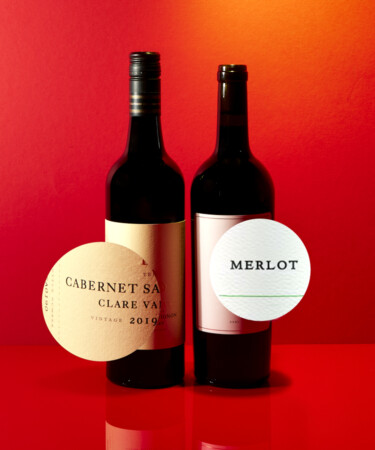Cabernet Sauvignon and Merlot are two of the most recognizable grape varieties in the world of red wine. Both are used in the famous blends of Bordeaux and make opulent wines in regions like California’s Napa Valley. They’re widely available on wine shop shelves, popular options at steakhouse dinners, and coveted purchases in many collectors’ cellars. And while drinkers can find single-varietal expressions of both grapes, they’re often bottled together in luscious red blends — so it’s no wonder why it can be confusing to differentiate between the two.
While these rich and full-bodied reds share a lot in common, there are some important differences to note between the two grapes. And learning the key characteristics of each can help optimize your drinking experience, and maybe even help you determine which one is your favorite. From tasting notes to prestige levels, here are the major differences between Cabernet Sauvignon and Merlot.
Cabernet Sauvignon vs. Merlot: Regions
It’s widely believed that both Cabernet Sauvignon and Merlot are originally from the Bordeaux region in the southwest of France. And while both do share Cabernet Franc as a parent, each sibling actually has its own home turf within Bordeaux. The wines of Bordeaux are typically blends, but depending on where you are in the region, they can either be Merlot- or Cabernet Sauvignon-dominant.
Bordeaux is split into two major areas by the Gironde estuary and the Dordogne and Garonne rivers. The section to the north of the Dordogne river is referred to as the Right Bank, and the area south of the Garonne is the Left Bank, the section between the rivers is known as Entre-Deux-Mers. The wines of the Right Bank, which includes prestigious appellations like Saint-Emilion and Pomerol, are typically Merlot-dominant, and Cabernet Franc and Cabernet Sauvignon play a supporting role in the blends. The wines of the Left Bank are predominantly Cabernet Sauvignon.
Even though both grapes can trace their roots to this area of France, both Cabernet Sauvignon and Merlot are now widespread across the globe’s wine regions. (Though if it were a popularity contest, Cabernet Sauvignon can claim the crown of most planted red grape variety in the world.) Cab’s rise to red wine dominance can likely be traced back to the 1976 Judgement of Paris tasting, where a Napa Valley Cabernet Sauvignon triumphed over French wines in a blind tasting. This put varietal Cab on the map and inspired regions around the world to embrace the grape. Great Cabernet Sauvignon and Merlot can now be found in top wine-producing countries including the U.S, Chile, Australia, South Africa, Italy, and more. And Merlot usually tags along, too.
Cabernet Sauvignon vs. Merlot: Growing Conditions
In their home of Bordeaux, it’s clear that Merlot and Cabernet Sauvignon thrive under slightly different conditions. While both are influenced by the region’s continental climate, the Right Bank’s terroir consists of red clay and limestone, and Merlot thrives in these cool, well-draining soil types. The Left Bank has rocky, gravel-based soils that make the Cabernet Sauvignon vines struggle for nutrients, and develop its rich characteristics.
Both Merlot and Cabernet Sauvignon require a sunny environment to ripen, so they can typically be found in warmer climates like California, Australia, and the South of France. But Merlot can also be found in some cooler-climate regions like Switzerland and northeast Italy, where it expresses more fresh, light-bodied characteristics.
Cabernet Sauvignon vs. Merlot: Perception
As we’ve established, Cabernet Sauvignon has become the darling of the red wine world since it single-handedly drove Napa Valley to incredible fame and success. After the Judgement of Paris tasting, many wine regions rushed to start making their own prized Cabs.
Even though Merlot lived in the shadows of its sibling, it remained a popular and well-respected grape — until a cult-favorite movie shifted its public perception with just one line. In the 2004 film “Sideways,” which takes place in California’s Santa Barbara region, the main character famously proclaims “I am not drinking any f*cking Merlot.” Somehow, this indictment actually led to a real-life rejection of Merlot. The characters sing the praises of Pinot Noir throughout the movie, and as a result, many drinkers swapped their bottles of Merlot for Pinot — and winegrowers started doing the same. Twenty years later, the grape is still recovering from “The Sideways Effect.”
Cabernet Sauvignon vs. Merlot: Flavor Profile
Even though it’s fun to uncover the historic differences between Cab and Merlot, at the end of the day, it’s all about which tastes better to you. So, it’s time to flesh out the differences between these two grapes from a palate perspective.
First, let’s cover the similarities. Cabernet Sauvignon and Merlot are usually medium- to full-bodied wines known for their rich and luscious fruit character. They’re also both offspring of Cabernet Franc, a grape that’s brimming with unique savory qualities. Cabernet Franc is known for expressing aromas and flavors associated with pyrazines, a chemical compound that resembles the taste of green peppers or jalapeños. So since this characteristic is in their genetic makeup, both Cabernet Sauvignon and Merlot can also have a savory, peppery hint to them. Both Merlot and Cabernet Sauvignon are often aged in oak barrels, too, so they can both have hints of vanilla, cedar, tobacco, and other flavors associated with oak aging.
When it comes to deciphering between the two, Merlot can tend to be a bit more subtle compared to Cab’s intensity. Merlot has plush plum and blueberry flavors with silky tannins whereas Cabernet Sauvignon can have really inky blackcurrant and cassis notes with more grippy tannins.
